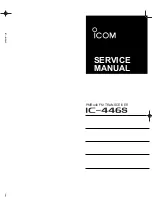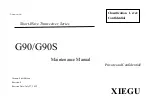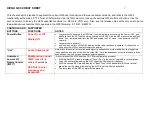
6 Maintenance
This section covers maintenance techniques and guidelines.
WARNING
Explosion can result into a serious injury or death.
x
Do not remove the transmitter cover in explosive environments when the
circuit is live.
x
After disconnecting power wait for a minute to allow the circuit and enclosure
to cool down before opening.
x
Avoid direct contact with the leads and terminals. High voltage on leads can
cause electrical shock.
x
Ensure that the transmitter casings are sealed when the assembly is in
operating condition.
x
Only trained and qualified personnel may undertake start-up and maintenance
activities.
6.1 Hardware Maintenance
Perform maintenance task at regular intervals. Set the maintenance schedule in advance
and maintain a logbook to note maintenance activity details. Maintenance schedule
depends on the system, installation conditions, working medium and rigorousness of the
operation. Consider the system downtime when maintenance cycle is running. Ensure that
it does not affect the system performance.
Maintenance majorly involves sensor cleaning and verifying connections.
Test Terminal
Test Terminal is marked as TEST on the terminal block. Connect TEST and negative
terminal to the test terminal. Ensure that the voltage across the receptacles is kept below
the diode threshold voltage so that no current passes through the diode. Make sure that
the resistance of the test connection does not exceed 10 ohms while connecting an
indicating meter or while taking the test readings. Note that a resistance of 30 ohms can
cause an error of approximately 10% of actual value.
Disassembling the Electronics Housing
The transmitter assembly comes in dual-compartment housing; one contains the
electronic module, and the other contains all wiring terminals and the communication
receptacles. The separate compartment of wiring terminals ensures hassle free handling
while running a routine maintenance cycle.
External Cleaning
x
Use washing agent that will not damage the instruments.
x
Protect the pressure sensing diaphragm from mechanical damage caused by sharp
objects or external pressure.






































